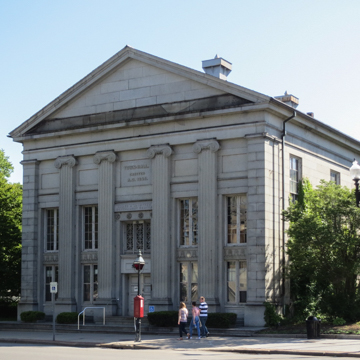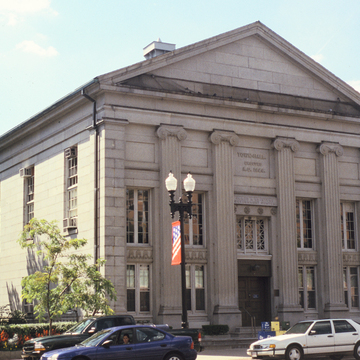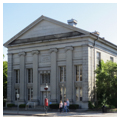Alexander Parris and Isaiah Rogers were the two most important Boston architects who worked in the Greek Revival style. Rogers is perhaps less well known because his most significant projects, such as the Tremont House hotel and Merchant's Exchange, both in Boston, are no longer extant. The facade of the Quincy City Hall is actually reminiscent of the Merchant's Exchange on State Street, as it is a granite structure built in the form of a classical temple with four fluted Ionic pilasters in antis supporting a full entablature and pediment. Except for the pilasters, the exterior of the Quincy City Hall is virtually without ornament, relying instead on the correct proportions and moldings of classical architecture. The building was erected under the supervision of Solomon Willard, who assisted Rogers on many projects, including both the Boston and New York Merchant's exchanges.
When it incorporated as a city in 1888, Quincy remodeled the interior of the building. Although designs, probably by the city engineer, were published as early as 1891, funding for work was not allocated until 1902. In 1979, the City of Quincy added a wing for municipal offices in the rear of the 1844 structure, a three-story glass and steel building, set back behind a park with a World War II monument and connected to the original building by a two-story hyphen.
On the other side of the city hall is the Hancock Cemetery (NR), established in the seventeenth century with the oldest stone dating from 1641. President John Adams organized a group of citizens to protect the cemetery in 1808. The iron fence was added in 1844, the same year the town hall was built.


















